Pad See Ew – the popular Thai stir fried noodles straight from the streets of Thailand made at home! While Pad Thai is sweeter and nuttier, Pad See Ew is salty, balanced with a touch of sour and a wonderful chargrilled flavour which you can create at home!
This is a reader-favourite recipe included by popular demand in my debut cookbook “Dinner”!

Pad See Ew
Pad See Ew, which means “stir fried soy sauce noodles”, is an extremely popular Thai street food meal and one of the most popular noodles dishes at Thai restaurants here in Australia.
Making a great Pad See Ew at home simply comes down to two things:
The right sauce. Basic recipes online will instruct you to use little more than just soy sauce and sugar. It takes a little more than that!
Caramelising the noodles – Getting a little caramelisation on the noodles makes all the difference between an “ok” and “wow, it’s JUST like you get at restaurants!”.
The trick? Remove the stir fry ingredients. Cook the noodles with sauce separately. Less stuff in the wok (or skillet) = easier to caramelise the noodles. At least, at home. If you’ve got a giant restaurant wok burner, you don’t need to do the noodles separately!
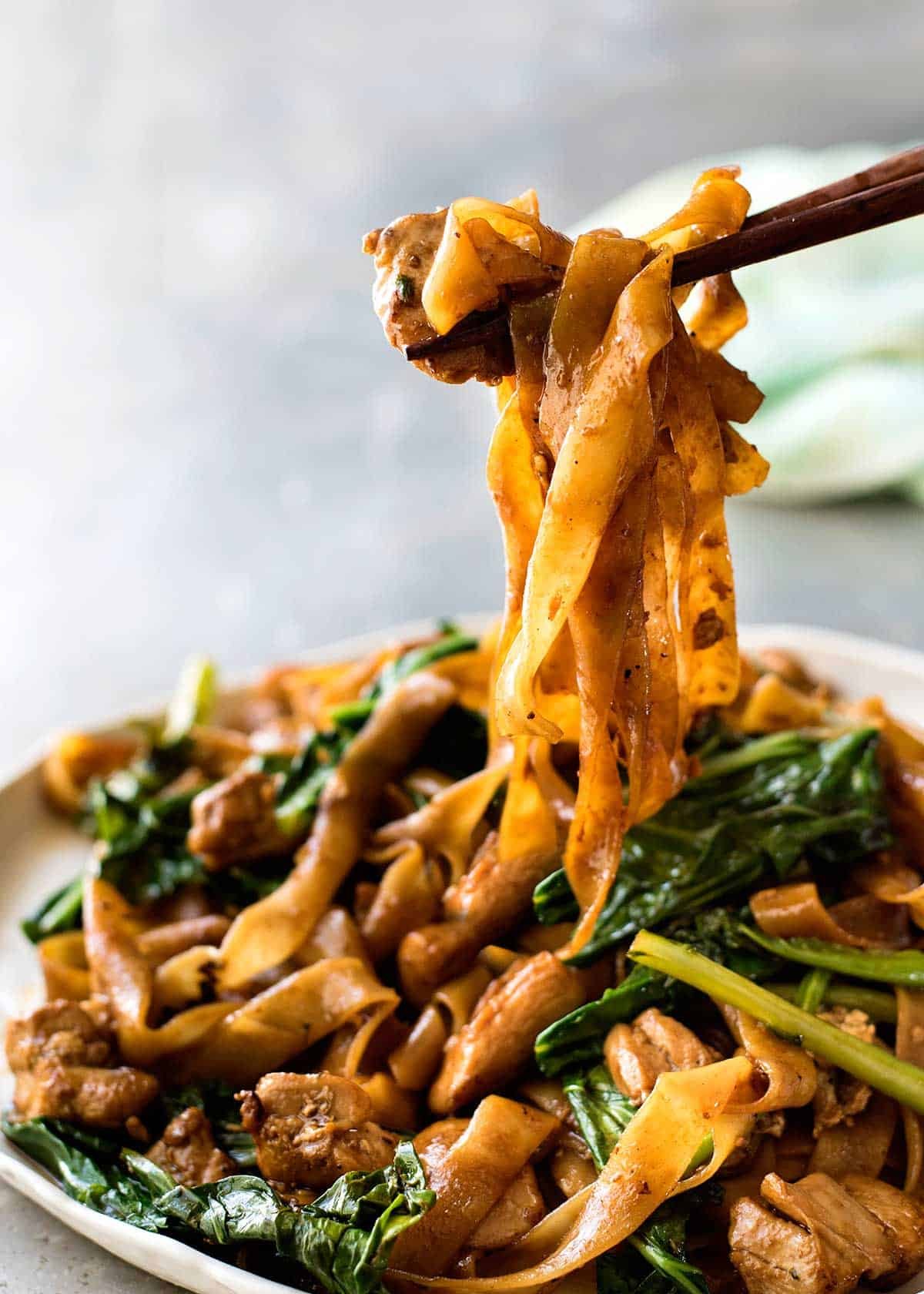
What goes in Pad See Ew
I can’t remember where I originally got the recipe from. Probably from David Thompson, the famous Australian chef who has dedicated his life to mastering the art of Thai cooking. I’ve made it so many times over the years, I can almost make it with my eyes closed. (Not really….but you know what I mean!)
So I had to actually measure the ingredients properly to share the recipe!
1. Pad See Ew Sauce ingredients
Pad See Ew has a sweet-savoury-touch-of-sour flavour, and this is made with a combination of the following ingredients:
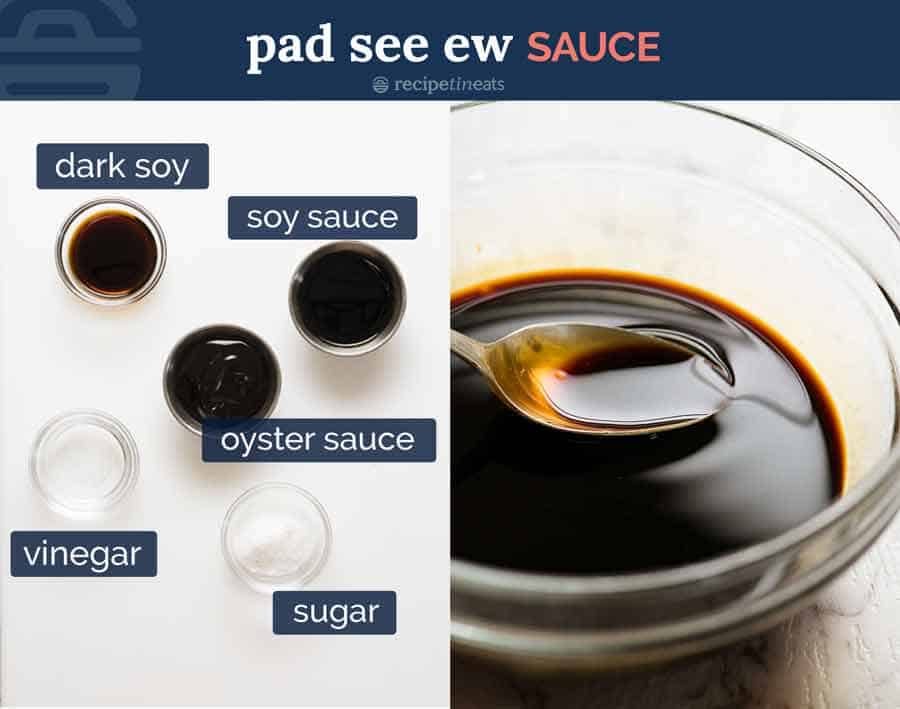
Dark soy sauce – For flavour and staining the noodles a dark brown.
Ordinary or light soy sauce – For seasoning (salt) and a bit of flavour. Most of the flavour comes from the oyster sauce and dark soy sauce. More on different soy sauces and when you can substitute with what in this About Soy Sauces post.
Oyster sauce – Key ingredient, it’s like 10 difference sauces mixed up in one bottle!
Vinegar – To balance the sweet and savoury. Some form of sour is a key ingredient in South East Asian cooking!
Sugar – For sweetness.
2. Pad See Ew ingredients
And here are the other ingredients for Pad See Ew:

Noodles – Pad See Ew is traditionally made with Sen Yai, which are wide, thin fresh rice noodles that are not easily accessible. Even most Asian stores in Sydney do not sell them – you usually need to go to a Thai grocery store.
So it is perfectly acceptable, and just as delicious, to make them with any wide flat rice noodles. I use dried rice noodles labelled as “Pad Thai” Rice Noodles (pictured below) because they are the widest available at the supermarket.
Once rehydrated, they’re essentially Sen Yai Noodles – just not quite as wide.
Chinese Broccoli / Gai Lan – This is a key authentic ingredient in Pad See Ew. Otherwise known as Gai Lan or Kai lan, it’s leafy and looks quite different to broccoli, but you’ll notice a similarity in the texture of the stems (hence the name).
If you can’t find it, just sub with other Asian greens, or a combination of broccoli or broccolini + spinach.
Chicken and egg – Feel free to use other proteins if you wish. But chicken is by far the most popular.
How to make Thai Stir Fried Noodles
Usually when making stir fried noodles, we toss everything together in one big pan or a wok.
But for Pad See Ew made at home, I do things differently to best replicate a restaurant flavour and minimise noodle breakage:
Cook chicken and vegetables first, then remove
Add noodles and sauce, toss to caramelise (just 15 seconds), then add chicken and vegetables back in.
Reason: A signature flavour in Pad See Ew is the caramelisation of the noodles. Restaurants and street vendors achieve this with super powered gas stoves with fiery heat that you’ll never find in a home kitchen. The only way to replicate that caramelisation on the noodles on a home kitchen stove is to declutter the wok and cook the noodles separately – the noodles will caramelise in 15 seconds.
The other reason is that rice noodles break if you toss them too much. Doing the two-stage toss makes it much easier and faster to disperse the sauce and bring the Pad See Ew together.
Trust me on this point. I’ve made a LOT of Pad See Ew at home in my time, and the two-stage toss it the easiest and most effective technique!

Garlic, chicken and Chinese broccoli STEMS first – Using either a wok or large skillet set over high heat, heat the oil then sauté the garlic until it goes light golden. Add the chicken then once it mostly changes from pink to white, add the Chinese broccoli stems which take longer to cook than the leafy part.
Once the chicken is cooked (it should only take 2 to 3 minutes), toss the Chinese broccoli leaves in and cook for 30 seconds or so just until wilted.
Push everything to the side to make room to scramble the eggs on the side. This is the traditional Thai way of scrambling eggs in Pad See Ew!
Crack egg straight into the wok.
Scramble egg – Then mix to scramble it. Speed is of the essence here – we want scrambled egg not a sunny side up egg!
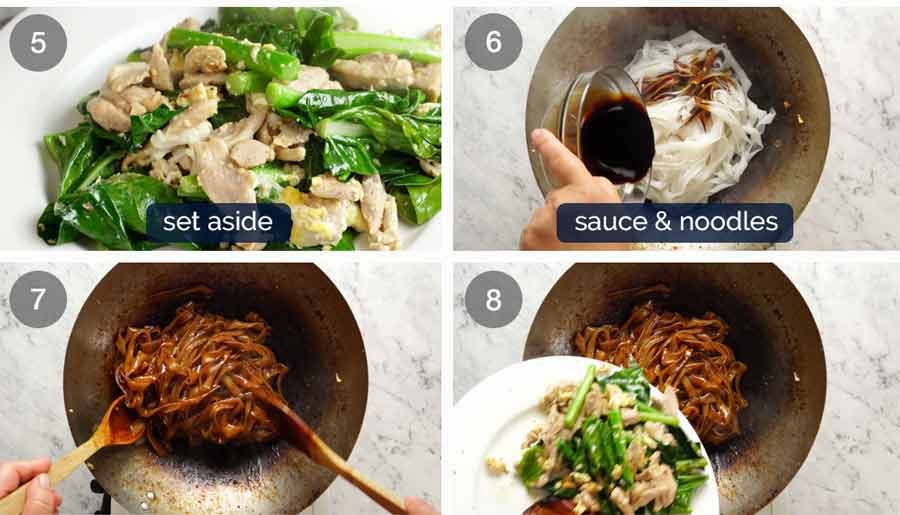
Empty wok – Remove the chicken and vegetables onto plate. As mentioned above, the best way to cook Pad See Ew at home is to cook the noodles separately so we can get some nice caramelisation on them. If we don’t do this, then the noodles just stew instead of caramelising.
Add noodles and sauce into the wok.
Toss quickly for 1 to 1 1/2 minutes until the sauce is dispersed throughout the noodles and you see some caramelisation on the edges.
PRO TIP: You want to be quick here because the longer and more you toss, the more noodle breakage you have. You’ll notice restaurants typically toss the noodles in the wok without using a wooden spoon or other tool for stirring – this too helps to minimise noodle breakage.
A note on Noodle Breakage – That said, you WILL get some noodle breakage, and that is normal / perfectly acceptable. Ever notice how the wide, flat noodles in Pad See Ew served at Thai restaurants are not long strands? That’s just the way it is. In fact, traditionally, Pad See Ew is served in Thailand with a FORK or spoon instead of noodles for ease of eating.
Add chicken and veg back in – Once the noodles are caramelised, add the chicken and vegetables back in. Give it a quick toss just to disperse, then serve!

As with all stir fries, once you start cooking, it moves very fast! So have everything prepared and ready to throw into the wok because there’s not time to be scrambling around the kitchen!
If you want to add a fresh side, try this Asian Slaw – it’s a great all rounder that goes with all Asian foods. – Nagi x
Watch how to make it
This recipe features in my debut cookbook Dinner. The book is mostly new recipes, but this is a reader favourite included by popular demand!
Hungry for more? Subscribe to my newsletter and follow along on Facebook, Pinterest and Instagram for all of the latest updates.
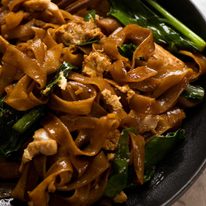
Pad See Ew – Thai Stir Fried Noodles
Ingredients
Noodles
- 200g / 7 oz dried wide rice stick noodles , or 15 oz / 450g fresh wide flat rice noodles (Sen Yai) (Note 1)
Sauce
- 2 tsp dark soy sauce (Note 2)
- 1 1/2 tbsp oyster sauce
- 1 tbsp light soy sauce (or all purpose, Note 3)
- 2 tsp white vinegar (plain white vinegar)
- 2 tsp sugar (any type)
Stir Fry
- 3 tbsp peanut or vegetable oil , separated
- 2 cloves garlic cloves, very finely chopped
- 1 cup / 150g / 5oz chicken thighs (boneless, skinless), sliced (Note 4)
- 1 large egg
- 4 stems Chinese broccoli (Note 5)
Instructions
Preparation:
- Chinese Broccoli – trim ends, cut into 7.5cm/3" pieces. Separate leaves from stems. Cut thick stems in half vertically so they're no wider than 0.8cm / 0.3" thick.
- Noodles – Prepare according to packet directions and drain. Time it so they’re cooked just before using – do not leave cooked rice noodles lying around, they break in the wok.
- Sauce – Mix ingredients until sugar dissolves.
Cooking:
- Heat oil: Heat 1 tbsp oil in a very large heavy based skillet or wok over high heat.
- Cook garlic and chicken: Add garlic, cook 15 seconds. Add chicken, cook until it mostly changes from pink to white.
- Chinese broccoli STEMS: Add Chinese broccoli stems, cook until chicken is almost cooked through.
- Chinese broccoli LEAVES: Add Chinese broccoli leaves, cook until just wilted.
- Scramble egg: Push everything to one side, crack egg in and scramble.
- REMOVE chicken from wok: Remove everything in the wok onto a plate (scrape wok clean).
- Caramelise noodles: Return wok to stove, heat 2 tbsp oil over high heat until it starts smoking (HOT is key!). Add noodles and Sauce. Toss as few times as possible to disperse Sauce and make edges of noodles caramelise – about 1 to 1 1/2 minutes.
- Add chicken back in: Quickly add chicken and veg back in, and toss to disperse. Serve immediately!
Recipe Notes:
Nutrition Information:
Originally published 2014, updated 2016. Updated over the course of the years with improved photos, the addition of ingredients and process photos as well as a recipe video. Recipe also updated with a more effective cooking method – cooking the ingredients in two batches. No change to ingredients, but yields a better caramelisation and easier to cook – read in post for explanation.
MORE THAI TAKEOUT FAVOURITES
Love noodles? Me too! See my entire Noodle recipes collection.
Life of Dozer
When Dozer ate a VERY spicy piece of chilli biltong!!

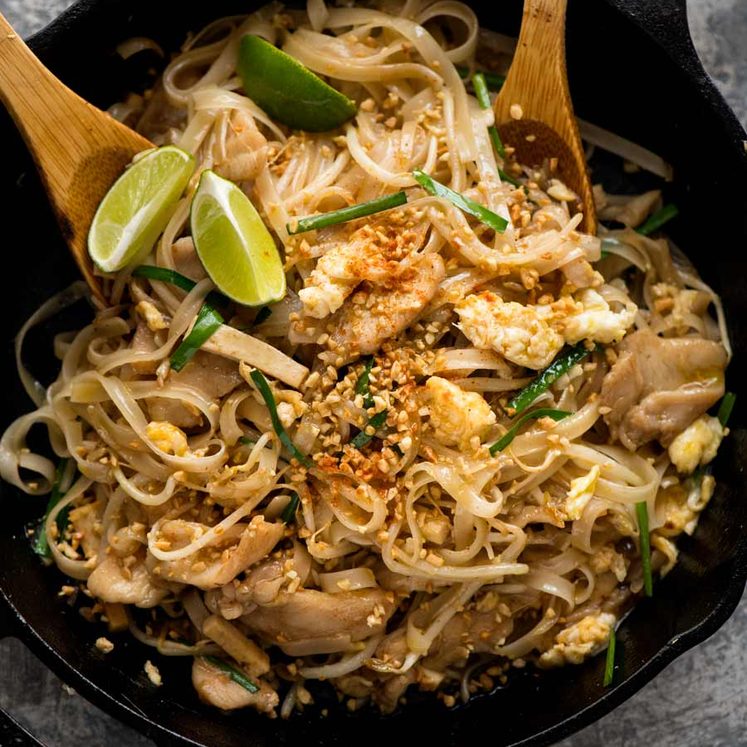
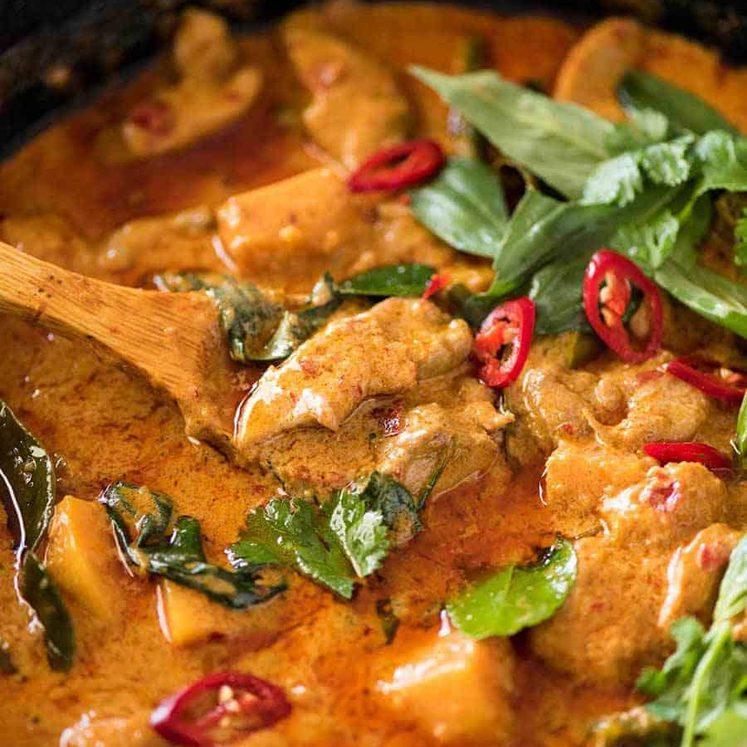
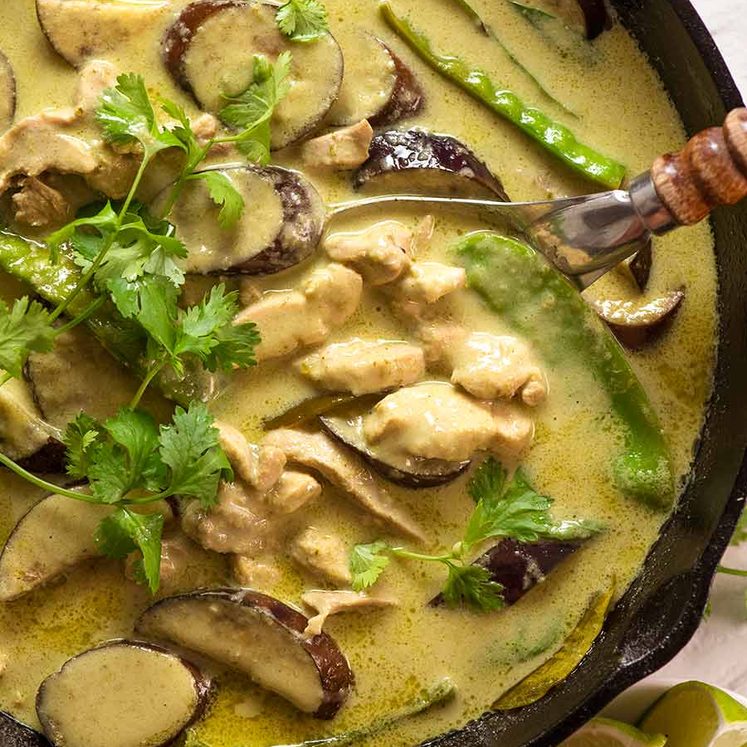

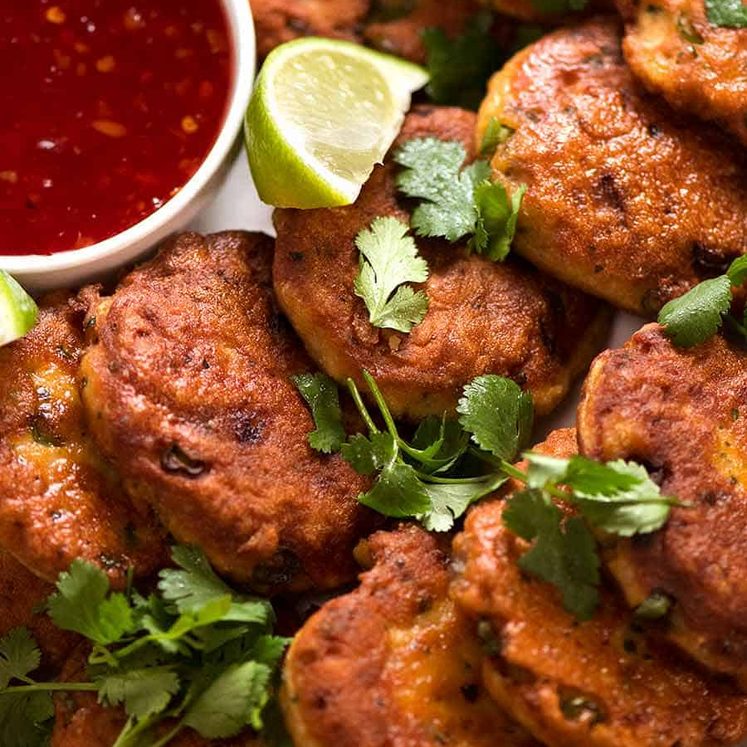
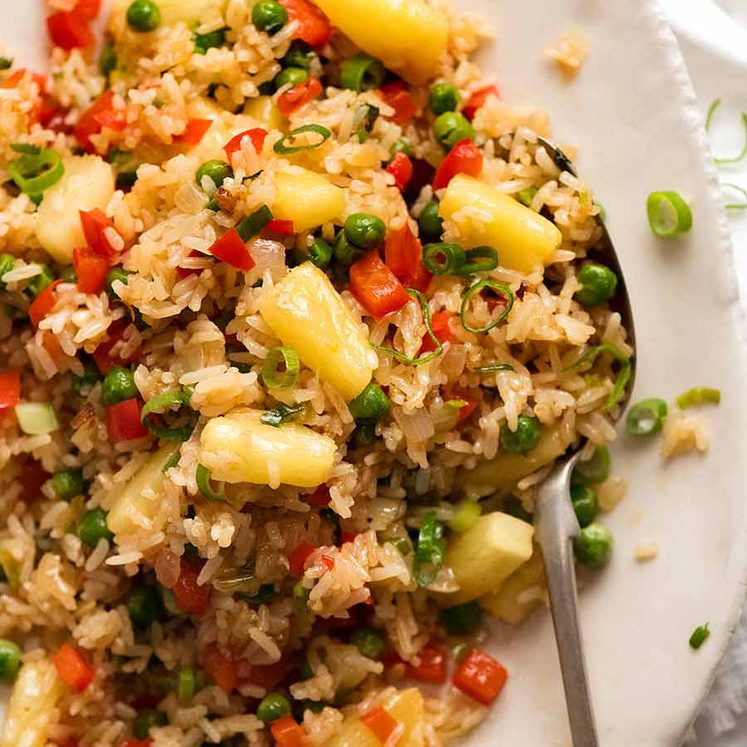
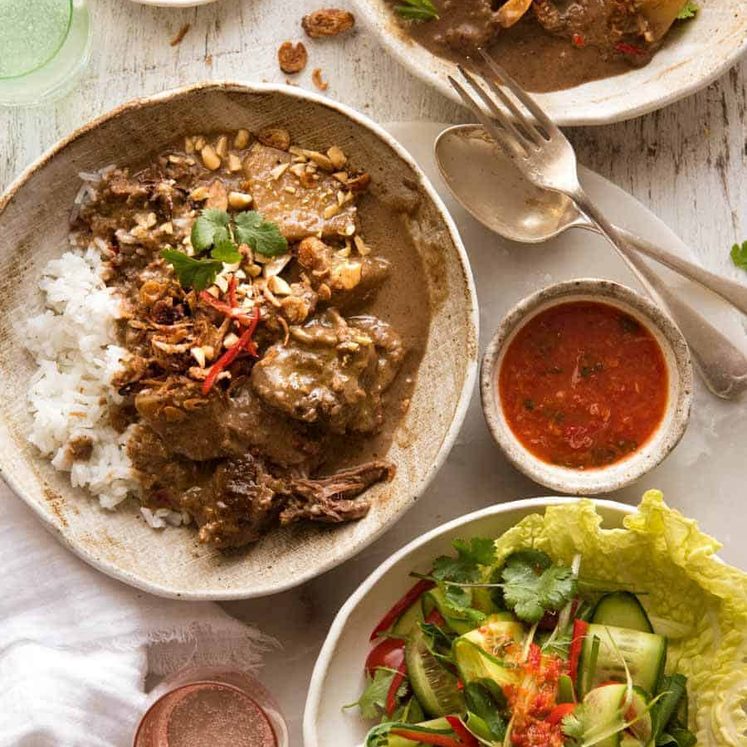

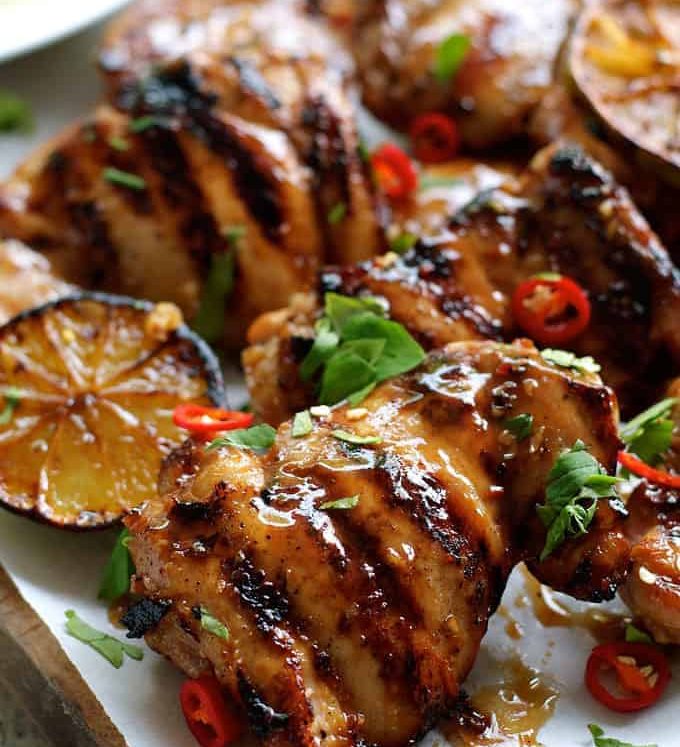
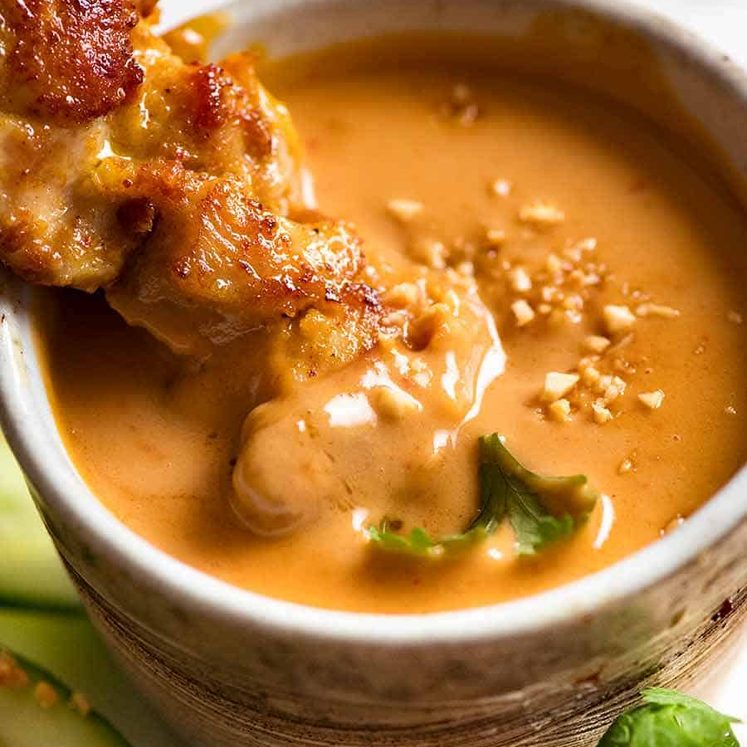
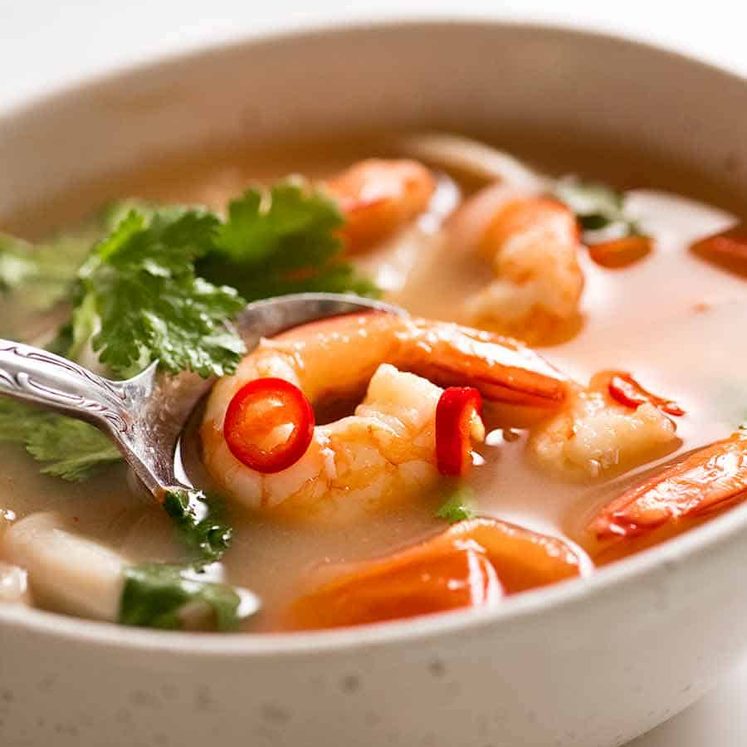
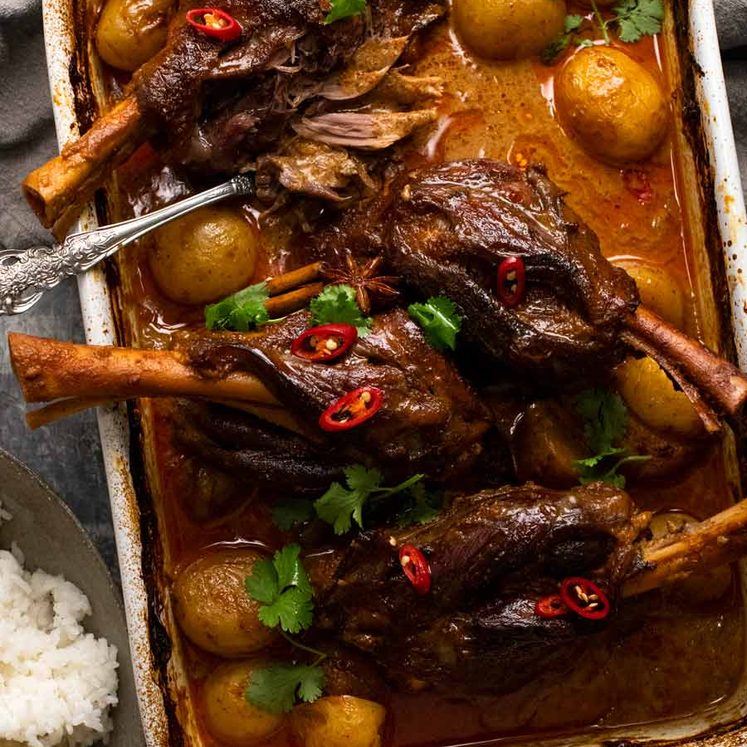
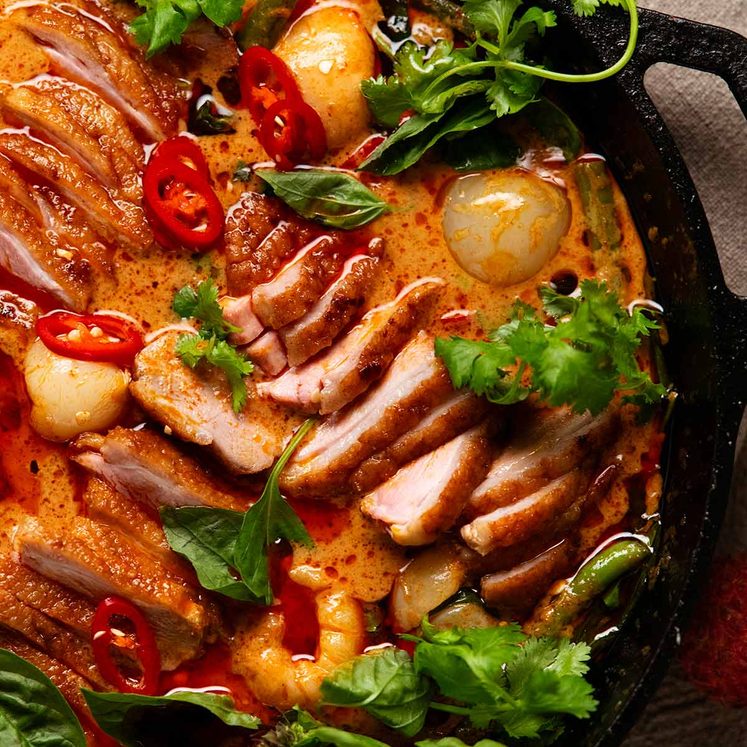
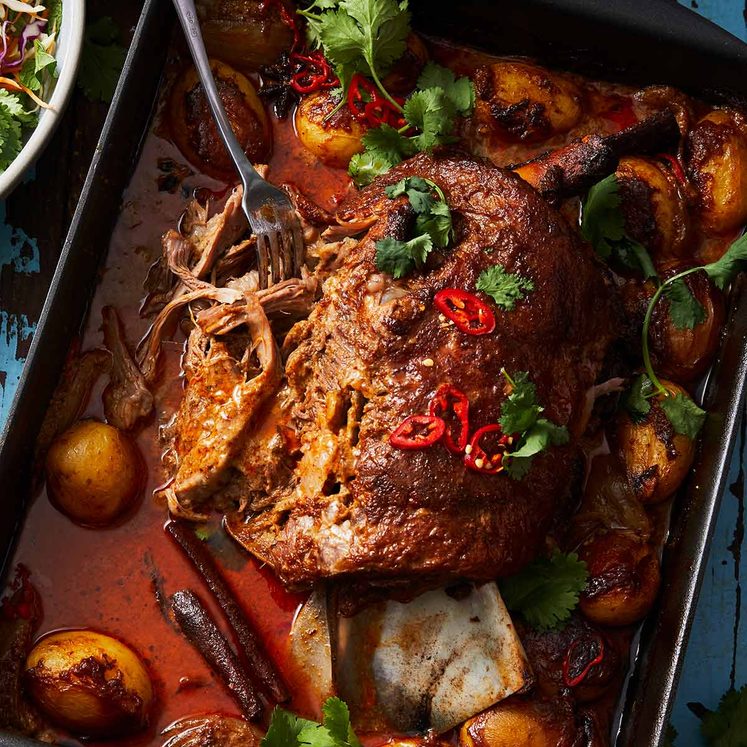
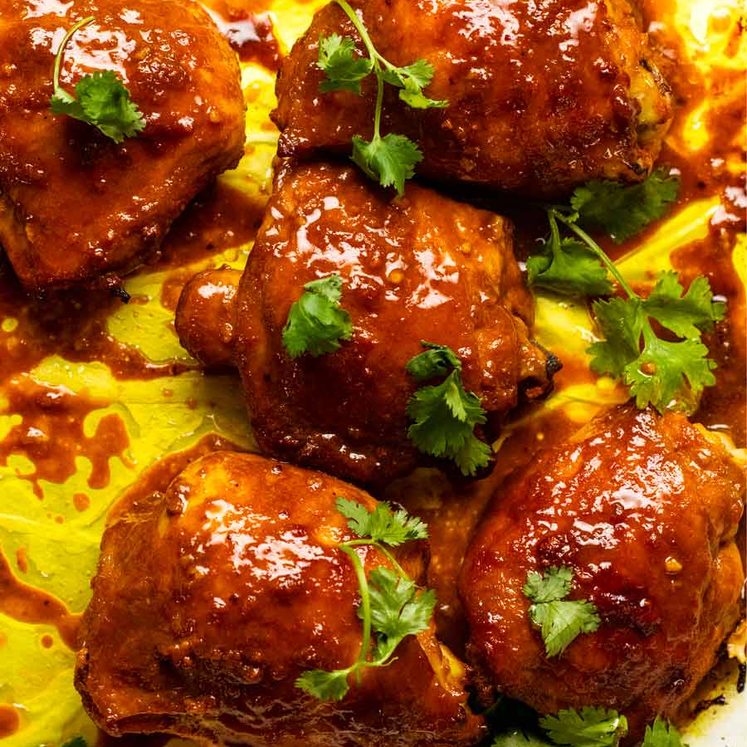
LOVE THIS!! Thank you for giving us all at home what we always have to go out for! I did vegetarian it up with tofu and added some basil just b/c I had some and used thin rice noodles since that’s what was in my pantry. I used your hoisin sauce sub and it was spot on. This will be memorized and made again and again! (too early for leftover lunch?)
Thank you Erin!!! So glad you enjoyed it!
Hi,
This recipe looks great, definitely going to give this one a go!
Just one question – if I use Pak Choy instead of Chinese Brocoli, can I use the stems in the same way?
Regards
Dennis
You sure can Dennis! Just quarter the park choy. 🙂
I made this sans chicken or tofu and it was very good. Thanks for making this recipe available.
I’m so glad you enjoyed it Sheila!!
Hi there! This recipe looks fantastic! Is dark soy sauce the same as sweet dark soy sauce? Looking forward to making this recipe!
Hi Ash! Nope, dark soy sauce is not as sweet as sweet dark soy sauce. 🙂 Hope you love it!
I made this for the first time last night and OHHH EMMM GEEE! So good! I wont lie, I’m very hesitant when it comes to making such dishes because everyone has their own variations that never hit the mark for me but THIS! My husband loved it and a co-worker was blown away and compared it to one of the best restaurants in the area, even asked for the recipe too. I will be definitely be making this again. Thank you for the recipe!
I’m SO GLAD you enjoyed it Melissa! Thank you so much for coming back to let me know!!
xx
Cooked this for the third time this month. I add more vegetables and reduce the sugar. Tasty & easy comfort food. Thankyou Nagi.
YAY!!! So glad you love this! I am a little obsessed with this myself! 🙂
Made this tonight. It was so good! I used dry rice sticks. I love the chewiness of them. Maybe some people expect them to be more like lo mein or spaghetti noodles. I thought the it was a perfect dish! Thank you for sharing!
I’m so glad you enjoyed it! Thanks so much Candace!!! N x
i am just starting to cook and this dish was delicious and easy to make! thank you for this recipe! will make it again and again!
Thank you Kat! I’m so glad you loved it!!
All I can find is oyster flavored sauce. Is there a big difference between that and oyster sauce? I love Pad See Ew but I hate the taste of “fish”.
Hi Kim! I just did a little google and I think it’s the same thing. And don’t worry you won’t taste oyster sauce and it doesn’t taste fishy! It actually tastes sweet, almost like a much more savoury and deep flavoured ketchup….if that makes sense!!! 🙂
I cant wait to make this as it is my wife’s absolute favorite dish
Ooh! I do hope she enjoys it!! N x
Hi Nagi,
This is so good! I followed your tip and put hoisin sauce instead of oyster sauce (allergic) and it was fantastic. It passed the test with the kids. They told me I need to do this every week! 😉
Thank you very much!
Cathy
YAY! So glad the kids approved too!! 🙂 N x
Can I use fish sauce instead of oyster? Same allergy and I am afraid the hoisin will be too sweet.
I think fish sauce will be too strong. Hoisin is definately the best sub. I don’t think you will find it too sweet, there is not that much sauce relative to the amount of noodles in this! 🙂 I have more of a savoury than sweet palette, I don’t like sauces to be too sweet. 🙂
Thanks for the tip, it was delicious!
yay! So glad you loved it!!
Hi, Nagi! Thanks for sharing this recipe–it was super easy to follow and make for a first timer. Question: My phad see ew came out pretty dry. I tried to dress it up with some oil while it was still cooking and some lime juice while serving, but it didn’t work. How can I fix this? Is this a result of possibly overcooking noodles? (They stuck together)
Hi Vivian! It sounds to me like either your noodles were not rehydrated enough (which results in your sauce being sucked into the noodles) OR yes if you overcooked the noodles and they were stuck together, it means they are bloated with excess water which means they become more of a sponge and will suck up more sauce 🙂 Hope you try it again though!
My aunt has been a thai cook for 10+ years, and her pad see ew is my favorite dish. I get it every time I see her. This recipe is almost spot on. I used regular broccoli and threw in some carrot coins as well, the crunch of the veggies really sets it over the top! My noodles got a little soft and fell apart a bit. Was the temperature too hot? Too much sauce? Anyway, really glad I found this recipe, Ill definitely be making it again. Thank you!
Hi Alex! I am so glad you approve! 😉 If your noodles fell apart I think it’s because you soaked it too long or consider trying another brand. I find that some brands (i.e. the dodgy ones!) break apart when stir fried. I’m glad you enjoyed it!
I am such a bad cook but I actually produced a tasty Pad see ew! I’ve spent time in Thailand and loved the food, this dish took me back there in one bite. I added in more veg, carrots, bean sprouts and some broccoli florets. Thank you for the recipe! 🙂
YAY!! I’m so glad you enjoyed it! Clearly you are NOT a bad cook, don’t put yourself down! 🙂 <3 Thank you for coming back to let me know you enjoyed it! N x
I made this last night and it turned out really good and delicious. Thanks for the recipe
Yay! So glad you loved it!! N x
hi, sorry to be a pain, but can I ask a stupid question? Do you recommend using chicken breast or thigh for this recipe? Hoping to make it tonight for dinner – sounds sooooo good
Hi Lisa! That’s not a stupid question, I should have clarified in the recipe. I recommend thigh – juicier! 🙂 I’ll update the recipe, thanks for asking!
Excellent recipe! I did over noodle it this first time so will watch this next time, but this recipe will be a staple for us. We just moved back to the U.S. after a two year stint in Bangkok where the Pad See Ew is one of our favorite dishes! Thanks for sharing this great recipe. I look forward to sharing this meal with friiends and family.
Oooh, I’m so glad! You must miss the food in Bangkok! But nice to be home I bet! 🙂
Loved!!! Only thing I did differently was double the sauce, but excellent and so easy! This will definitely be a keeper at our house!
SO GLAD you loved it! Wow, you must love your noodles seriously saucy, I like mine quite saucy so I have extra in this recipe anyway!! Thanks so much for coming back to let me know you enjoyed it!! 🙂
Hi Nagi,
I’m planning on trying this recipe, but would like to make it spicy. What do you recommend I add?
Thanks!
Natalie
Hi Natalie! Sliced or diced fresh red chilis, hot ones (I use birds eye) works well. Otherwise, a chili paste if you have it (just add as much as you want!), red chili flakes or even cayenne pepper! I don’t recommend sriracha cooked through it because it is a bit sour and will affect the overall flavour balance of this dish. 🙂 But if you like a bit of extra tang you most certainly could use it! Hope you love it! N x